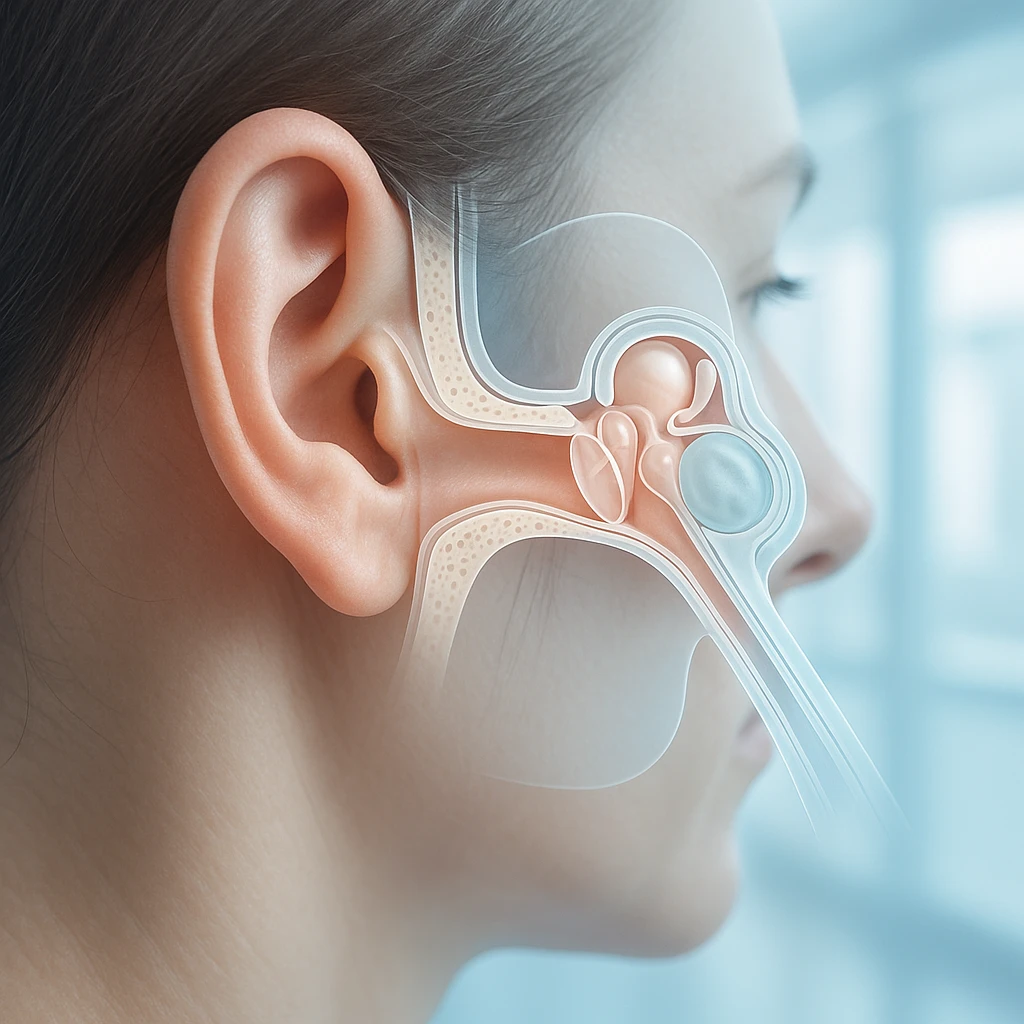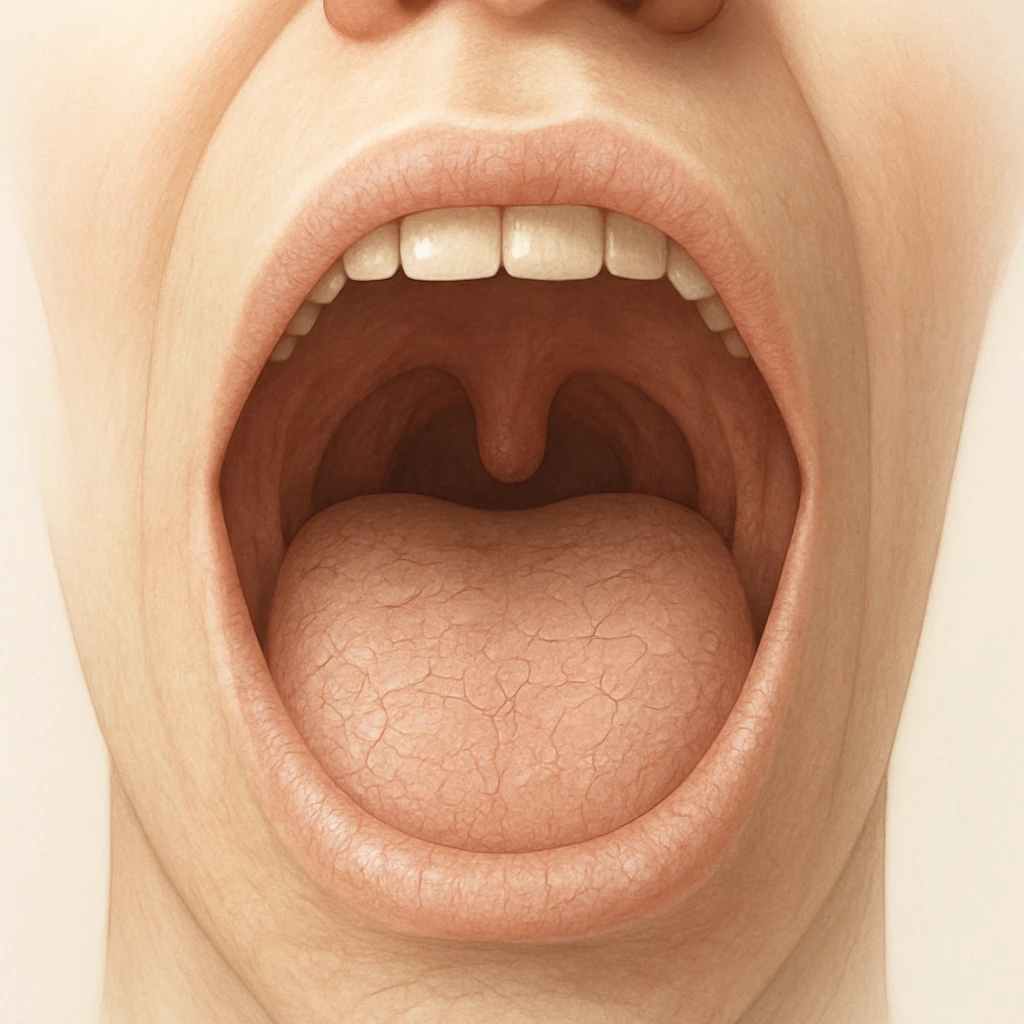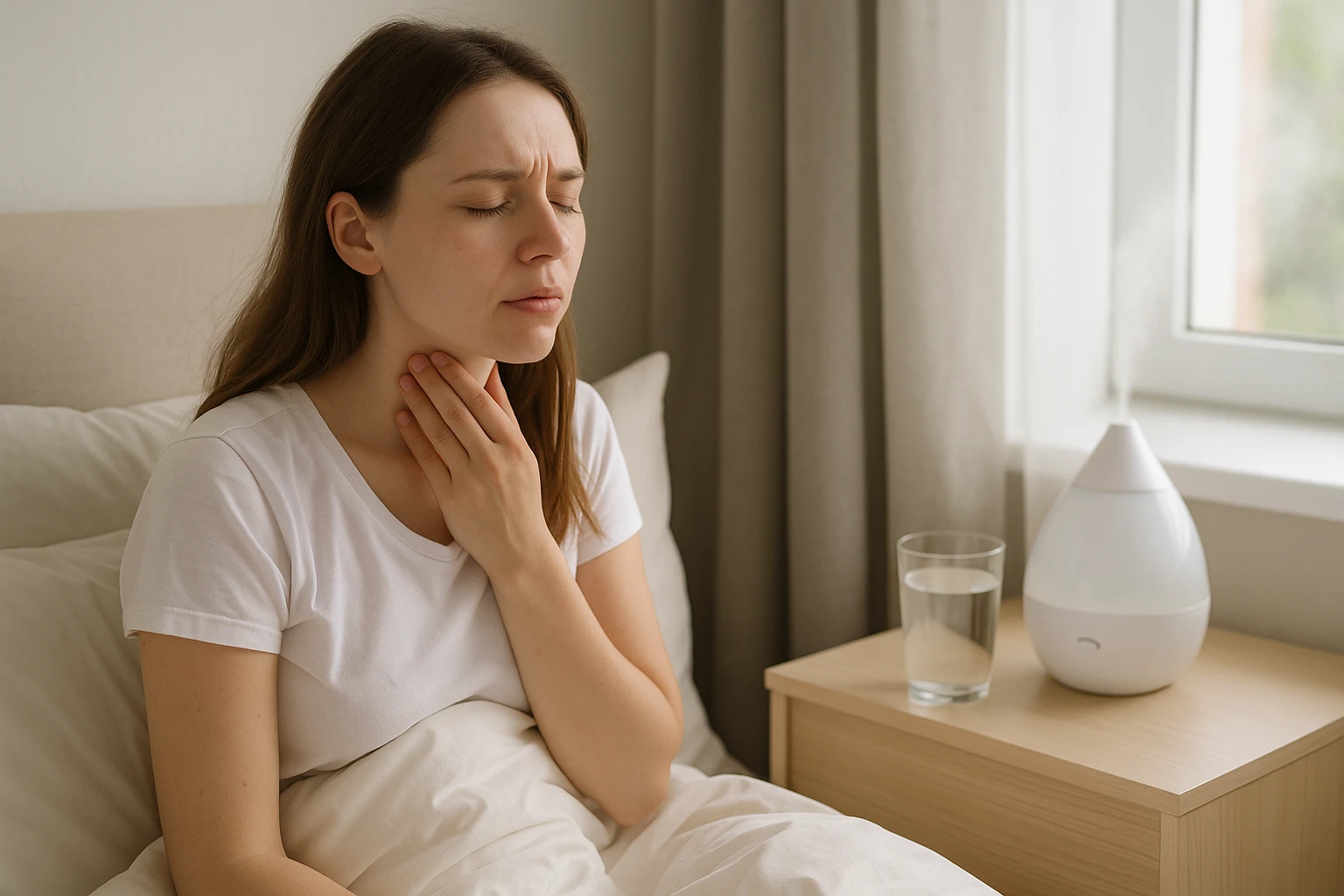Clogged Ears: Medical Causes, Treatment, and Prevention Tips
What Happens When Your Ears Feel Clogged
Many people experience the sudden sensation that their ears are blocked, as if sound has been slightly muted or pressure has built up inside. This feeling, often called ear fullness or clogged ears, can affect one or both ears and may come and go. It can happen to anyone, from a child with a cold to an adult stepping off an airplane. Although it is usually temporary, understanding how the ear maintains pressure balance helps explain why this common symptom occurs.
How the Ear Regulates Pressure
The ear has a built-in pressure control system involving a narrow passage called the Eustachian tube, which connects the middle ear to the back of the throat. Under normal conditions, this tube opens when we swallow, yawn, or chew, allowing air to flow and equalize pressure on both sides of the eardrum. When it becomes swollen or blocked-often due to allergies, infections, or rapid altitude changes-air cannot move freely. This imbalance can cause a feeling of fullness, mild discomfort, or muffled hearing as the eardrum becomes slightly stretched or pulled inward.
- Swallowing, yawning, or chewing helps open the Eustachian tube.
- Allergies, infections, or altitude shifts can temporarily block airflow.
- The result is pressure imbalance and a sensation of ear fullness or muffled hearing.
Eustachian tube dysfunction is one of the most frequent explanations for a clogged ear sensation. It can follow common upper respiratory infections or seasonal allergies and usually resolves once swelling or congestion subsides. In most cases, the hearing loss and pressure are mild and temporary, improving as the tube reopens and air circulation returns to normal.
Everyday Triggers for Ear Fullness
Changes in air pressure are among the most noticeable causes of ear congestion. Flying in an airplane, driving through mountains, or diving underwater can rapidly alter external pressure, while the air inside the middle ear lags behind. Until the Eustachian tube adjusts, this creates a sensation of blocked ears or the need to “pop” them. Swallowing or yawning usually restores balance quickly.
- Air travel and diving cause rapid external pressure changes.
- Cold or sinus infections and allergies can block the tube’s opening.
- Weather-related humidity shifts may temporarily affect ear pressure balance.
Cold or sinus infections, allergies, and even weather-related humidity changes can also temporarily affect how the Eustachian tube works. During these times, fluid or mucus may accumulate around the opening of the tube, making it harder for air to pass through. While the sensation can be bothersome, it typically improves as normal airflow returns and the pressure equalizes.

Common Causes of Clogged Ears
The sensation of a clogged ear can arise from several common physical processes involving either the outer or middle ear. Most of these causes are temporary and linked to how the ear naturally protects, cleans, and equalizes itself. Understanding these mechanisms helps explain why ear fullness, muffled hearing, or temporary pressure changes occur in everyday situations.
Earwax (Cerumen) Impaction
The ear canal produces cerumen, or earwax, as a natural protective barrier. It traps dust, debris, and microorganisms, preventing them from reaching deeper structures. Normally, earwax gradually moves outward as the jaw and skin cells shift during talking or chewing. However, if wax builds up faster than it can clear, or if it becomes compacted by cotton swabs or earbuds, it can form a blockage that obstructs sound transmission. This may cause reduced hearing, a sensation of pressure, or mild discomfort until the wax is safely removed.
- Earwax protects the ear canal from dust and bacteria.
- Excess or compacted wax can block sound and cause temporary hearing loss.
- Insertion of cotton swabs or earbuds increases the risk of impaction.
Earwax impaction is one of the most frequent and easily reversible causes of clogged ears. While it can affect people of all ages, it is especially common in those who use hearing aids or frequently insert objects into the ear canal. Once the wax softens or is removed by a healthcare professional, hearing typically returns to normal.
Eustachian Tube Dysfunction
The Eustachian tube connects the middle ear to the back of the throat and regulates pressure behind the eardrum. When inflamed or blocked-often due to allergies, upper respiratory infections, or sinus congestion-air cannot move freely. The resulting pressure difference can cause muffled hearing, ear fullness, or a popping sensation. In some cases, mild fluid buildup can develop in the middle ear until the tube reopens and pressure equalizes.
- Common triggers include allergies, colds, and sinus infections.
- Symptoms: muffled hearing, fullness, popping, or mild discomfort.
- Often resolves when congestion or inflammation improves.
Eustachian tube dysfunction can also follow altitude changes, such as during airplane ascent or descent. Although the discomfort can be frustrating, it usually resolves once inflammation or congestion improves and airflow returns to normal.
Pressure and Altitude Shifts
Rapid environmental pressure changes can temporarily affect the middle ear’s ability to equalize. During flying, diving, or mountain travel, external air pressure changes faster than the pressure inside the ear. Until the Eustachian tube adjusts, the eardrum becomes slightly stretched, creating a feeling of blockage or the need to “pop” the ears. Swallowing, yawning, or chewing gum can help the tube open and restore balance.
- Flying, diving, and mountain travel are common triggers.
- Temporary pressure differences cause fullness or ear popping.
- These effects are typically short-lived once the tube equalizes pressure.
These pressure-related episodes, sometimes called barotrauma, are usually short-lived and harmless. They reflect the ear’s natural sensitivity to pressure differences and are part of how the auditory system protects itself in changing environments.

Recognizing Symptoms and Getting a Diagnosis
Clogged ears can feel different from person to person, but they share a sensation of pressure or fullness that often disrupts normal hearing. While many cases are harmless and short-lived, understanding the symptoms and how healthcare professionals identify the cause can help distinguish routine congestion from a medical condition that requires attention.
Typical Symptoms and Sensations
Most people describe clogged ears as a sense of fullness or blockage that can affect one or both sides. Sounds may seem muted or distant, and the ear might feel as though it needs to “pop.” These symptoms reflect changes in pressure or blockage within the ear canal or middle ear. Some individuals also notice mild discomfort, popping sensations, or brief pain, especially when changing altitude, such as during flights or mountain travel. In most cases, these sensations resolve once pressure equalizes or the underlying congestion clears.
- Fullness or pressure in one or both ears
- Muffled or reduced hearing clarity
- Popping sensations or mild pain with altitude changes
- Temporary imbalance or echoing when speaking
When to Suspect a Medical Cause
Sometimes, clogged ears persist longer than expected or occur alongside other symptoms. When ear fullness is accompanied by noticeable hearing loss, persistent pain, fluid drainage, or dizziness, it may signal a problem requiring medical evaluation. Such cases can be linked to inflammation or dysfunction of the middle ear, where fluid or pressure buildup prevents normal vibration of the eardrum. Recognizing these warning signs early helps prevent complications or prolonged discomfort.
Red Flags: When to See a Doctor
- Ear pressure or muffled hearing lasting more than a few days
- Drainage or fluid coming from the ear
- Persistent or severe ear pain
- Dizziness or balance problems
Prompt evaluation can determine whether the issue stems from infection, blockage, or pressure imbalance.
How Doctors Examine the Ear
When clogged-ear symptoms do not improve on their own, clinicians use specific tools to identify the cause. The first step is usually an otoscopic examination, in which a lighted device allows the doctor to view the ear canal and eardrum. This can reveal signs of wax buildup, fluid, or inflammation. In certain cases, additional tests such as tympanometry or hearing assessments are used to evaluate how well the middle ear is functioning and to measure any pressure differences. These evaluations help confirm whether symptoms arise from Eustachian tube dysfunction, fluid retention, or another underlying cause.
Accurate diagnosis is key to appropriate care. Understanding the structure and function of the ear helps both patients and clinicians determine whether clogged ears are temporary or require targeted treatment.

Safe Relief at Home and Medical Treatments
Most cases of clogged ears can be safely managed with gentle self-care measures that help restore normal pressure or remove excess wax. However, knowing which techniques are safe-and when to seek professional help-is essential for protecting the ear’s delicate structures.
Home Remedies That Work
In many mild cases, ear pressure can be relieved by simple physical techniques that help equalize air between the middle ear and the environment. Swallowing, yawning, or performing a gentle Valsalva maneuver (pinching the nose and exhaling softly with the mouth closed) can help open the Eustachian tubes and balance pressure. These methods are most effective when ear fullness is caused by altitude changes or temporary congestion.
- Swallowing, yawning, or gentle Valsalva maneuvers help equalize middle-ear pressure.
- These techniques work best for mild pressure from altitude changes or temporary congestion.
For earwax-related blockage, softening drops can support the ear’s natural cleaning process. Over-the-counter solutions, or a few drops of mineral or olive oil, may help loosen wax so it can move outward naturally. This method should only be used when the eardrum is intact and there are no signs of infection, pain, or drainage. Gentle approaches protect the ear canal from irritation or injury while allowing normal function to resume.
- Softening drops or mild oils can assist natural wax clearance.
- Use only if the eardrum is intact and there is no infection or pain.
- Gentle methods reduce irritation and support safe cleaning.
What to Avoid
Despite common myths, inserting objects like cotton buds, hairpins, or ear candles into the ear canal is unsafe. These practices can push wax deeper, damage the eardrum, or cause burns and infections. Similarly, home suction devices and unverified online remedies can increase the risk of injury. Because the ear is self-cleaning, it rarely needs mechanical intervention unless directed by a clinician. Avoiding aggressive cleaning helps maintain the natural balance of earwax and prevents recurring blockage.
- Do not use cotton buds, hairpins, or ear candles.
- Avoid unverified suction devices or at-home removal kits.
- The ear naturally self-cleans; manual removal should only occur under professional guidance.
When Home Remedies Aren’t Enough
Sometimes, clogged ears persist even after trying safe home techniques. This may occur when the cause is related to infection, allergies, or a structural issue such as Eustachian tube dysfunction. In these situations, medical treatment may be needed to restore proper function. Clinicians may recommend decongestants, nasal sprays, or medications to treat inflammation or infection contributing to middle-ear pressure problems. If earwax remains impacted, professional removal methods such as irrigation or microsuction are performed in a controlled environment to avoid injury.
- Persistent symptoms may require evaluation for infection or Eustachian tube dysfunction.
- Treatments can include nasal sprays, decongestants, or anti-inflammatory medications.
- Professional wax removal uses safe methods such as irrigation or microsuction.
For individuals with chronic or recurrent Eustachian tube dysfunction, specialists may consider procedural options to improve airflow and prevent future blockages. Combining safe self-care with timely medical guidance ensures effective relief and helps preserve hearing health over the long term.

Prevention, Long-Term Care, and Follow-Up
Maintaining healthy ears over time involves protecting them from injury, keeping them clear of unnecessary debris, and responding promptly when symptoms persist. Simple habits and awareness can prevent many cases of clogged ears and help identify when professional care is needed.
Preventing Future Blockages
The ear is designed to clean itself naturally, and most people do not need to remove wax routinely. Inserting objects such as cotton buds, hairpins, or similar tools can push wax deeper into the canal, causing impaction or even injury to the eardrum. Instead, keeping the outer ear dry and avoiding excess moisture from swimming or bathing can help maintain natural balance. For people prone to congestion, managing allergies and nasal inflammation can also reduce the likelihood of recurrent pressure-related blockage.
- Avoid inserting cotton buds, hairpins, or other objects into the ear canal.
- Keep ears dry after swimming or bathing to prevent moisture buildup.
- Manage allergies or nasal inflammation to reduce congestion-related ear pressure.
Travel and Pressure-Change Tips
Altitude or pressure changes during air travel or mountain trips often lead to temporary ear fullness or the sensation of clogged ears. Swallowing, yawning, or performing a gentle Valsalva maneuver can help equalize pressure. Using these techniques during takeoff and landing helps the Eustachian tube function smoothly. For frequent travelers or those with colds or allergies, pre-flight use of prescribed nasal sprays or decongestants may minimize discomfort, but these should only be used under medical advice.
- Swallow, yawn, or perform a gentle Valsalva maneuver during pressure changes.
- Use pressure-equalizing techniques during takeoff and landing.
- Consult a healthcare provider before using nasal sprays or decongestants before flights.
When to Follow Up with a Specialist
While most cases of ear blockage resolve on their own, medical evaluation is necessary when symptoms persist. Seek care for hearing loss, significant pain, or drainage from the ear, as these can indicate infection or fluid buildup behind the eardrum. If self-care methods fail to provide relief, a clinician can perform a safe examination and identify the underlying cause. Chronic or untreated Eustachian tube dysfunction may lead to long-term middle-ear fluid and hearing impairment, making early intervention essential for protecting ear health.
Routine follow-up with an ear, nose, and throat specialist is recommended for individuals who experience frequent ear congestion or infections. Ongoing monitoring helps ensure early detection and effective management of any recurring issues.

Frequently Asked Questions About Clogged Ears
- Why do my ears feel blocked even when I don’t have a cold?
- Blocked or clogged ears can result from Eustachian tube dysfunction, mild swelling, or trapped air pressure in the middle ear. Even minor congestion from allergies can temporarily affect pressure balance.
- Is it safe to clean earwax at home?
- Most people do not need to remove earwax regularly, as the ear naturally cleans itself. Using cotton buds or sharp objects can push wax deeper and increase the risk of injury.
- Can flying or altitude changes cause clogged ears?
- Yes. Rapid changes in air pressure during flights, mountain travel, or diving can cause temporary ear fullness. Swallowing, yawning, or gentle pressure-equalizing techniques often provide quick relief.
- When should I see a doctor for clogged ears?
- Seek medical care if symptoms last more than a few days, include pain, fluid drainage, or hearing loss. Persistent cases may indicate infection or middle-ear fluid buildup.
- Why do clogged ears affect my hearing?
- Wax buildup or pressure changes can reduce the vibration of the eardrum and bones in the middle ear. This leads to temporary muffled or reduced hearing until normal airflow or clearance returns.
- Are ear candles or home suction kits effective?
- No. These methods are unsafe and can cause burns, blockages, or eardrum damage. Professional ear cleaning is always safer when removal is needed.
- Can allergies make ears feel clogged?
- Yes. Allergic inflammation can block the Eustachian tube, trapping air and creating a sensation of fullness or popping. Treating nasal allergies often helps restore normal ear pressure.
- What happens if clogged ears are left untreated?
- Long-term blockage from untreated Eustachian tube dysfunction can cause persistent fluid buildup or hearing problems. Early medical assessment helps prevent complications.
- Do ear drops help clear clogged ears?
- Softening drops can loosen earwax when the eardrum is intact and there are no signs of infection. They should not be used if there is ear pain, drainage, or suspected damage.
- How can I prevent clogged ears when flying?
- Chewing gum, swallowing, or performing a gentle Valsalva maneuver during takeoff and landing helps equalize pressure. For frequent fliers, treating allergies or mild congestion before travel can also help.













